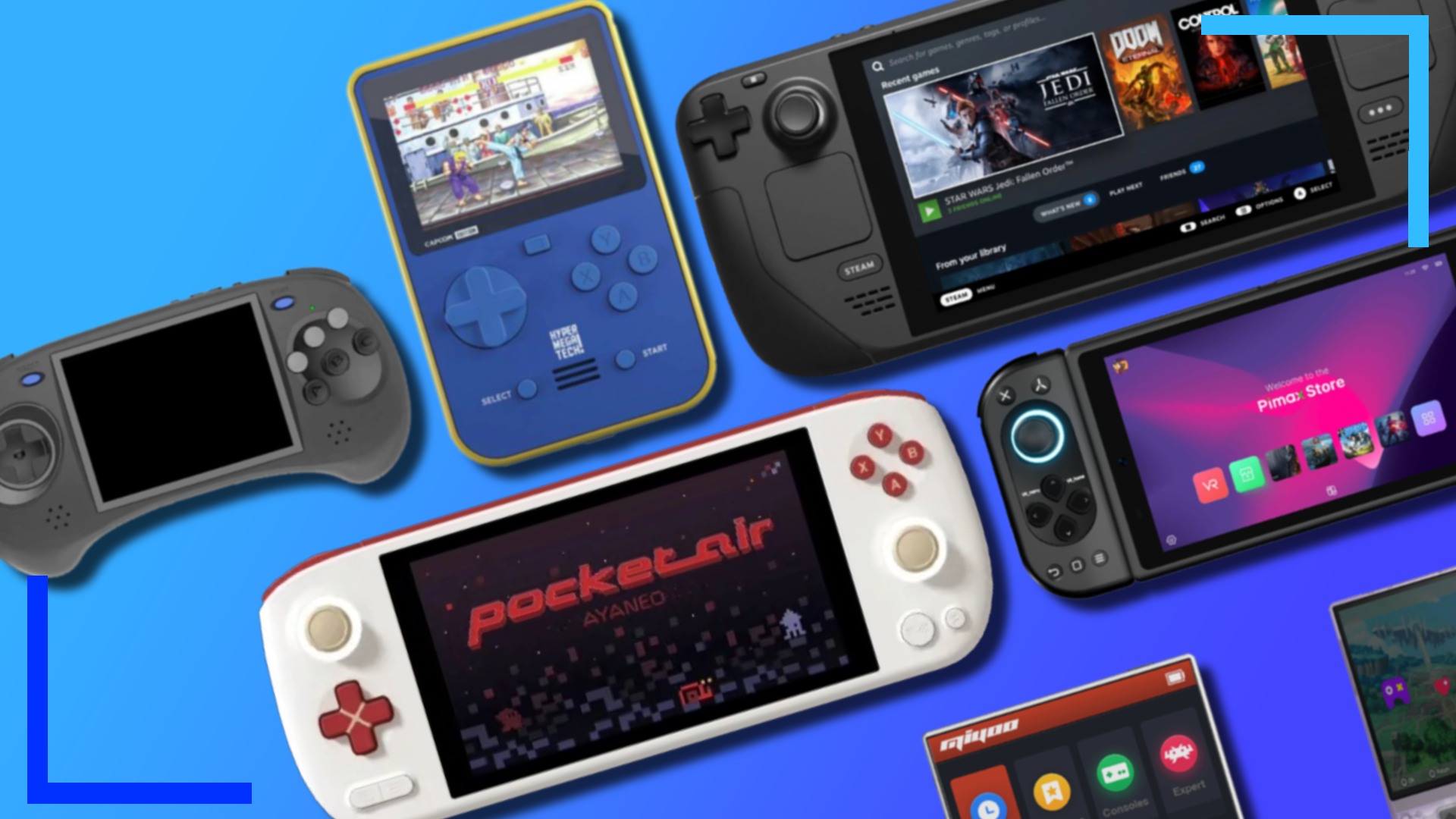As someone who collects retro handhelds, I thought now would be a good time to step back and assess which of the ones I’ve reviewed I’d recommend to both newcomers and collectors alike.
There is simply so much choice nowadays that it’s easy to get overwhelmed by all the myriad options available, and with prices as low as $60 and some as high as $679, it’s hard to know if these devices are actually worth picking up or which are just a quick cash grab.
The devices below are what I consider to be the best handhelds at the moment in terms of price and value, so if you want something portable to game on with a stylish form factor? I got you!
7: Steam Deck.
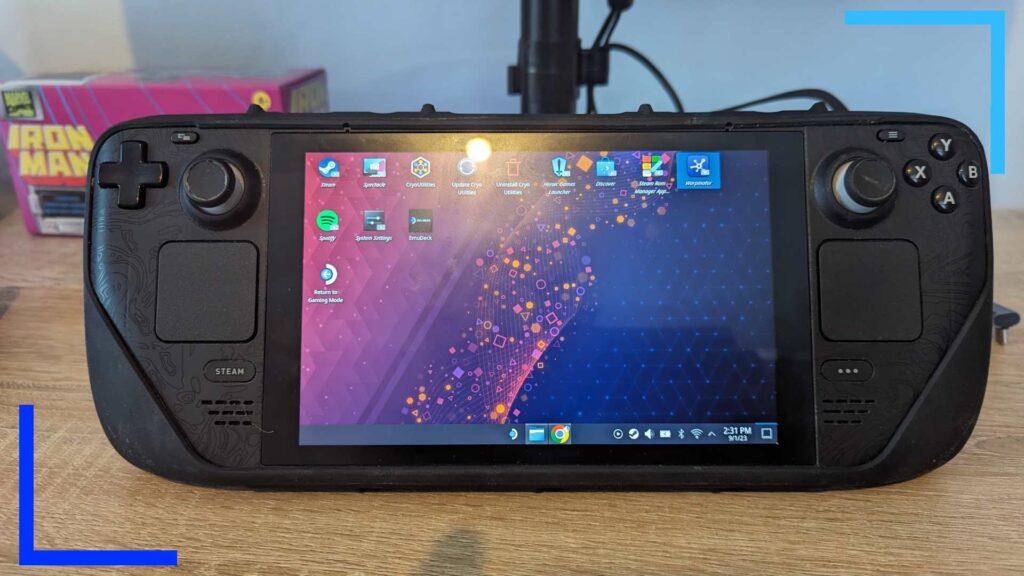
It always feels like cheating to mention the Steam Deck, that’s why it’s not higher on this list. It’s a portable gaming PC, so of course it’s going to slay when it comes to retro games.
What can it play? Just about everything. PS3 and Xbox 360 are extremely limited due to the respective emulators being much newer than, say, something that plays SNES games. Some games work well, but the majority are unplayable.
A quick side note: If you are trying to emulate Xbox 360 games on Steam Deck, you want to get custom patches installed alongside them. Red Dead Redemption runs poorly on the native Xenia emulator, but custom patches allow the game to run at 60 frames per second more often than not.
Okay, back to it. The problem with the Steam Deck is despite how brilliant it is, it’s much more cumbersome than something like the AYANEO Pocket Air. It’s massive, weighing in at 669 grams for the OG model and 640 grams for the OLED version, it’s not as comfortable to hold as the other handhelds in this guide. The battery life for emulating newer titles like Switch isn’t great either. I averaged between 90 minutes and three hours depending on the title. Not great.
But in its defense, I did say it’s a portable gaming PC. How portable it is given the need to be plugged in is up for discussion, but if you only care about power and nothing else, or you want to play PC games as well, the Steam Deck is one of the best options out there.
6: RG3XX Plus.
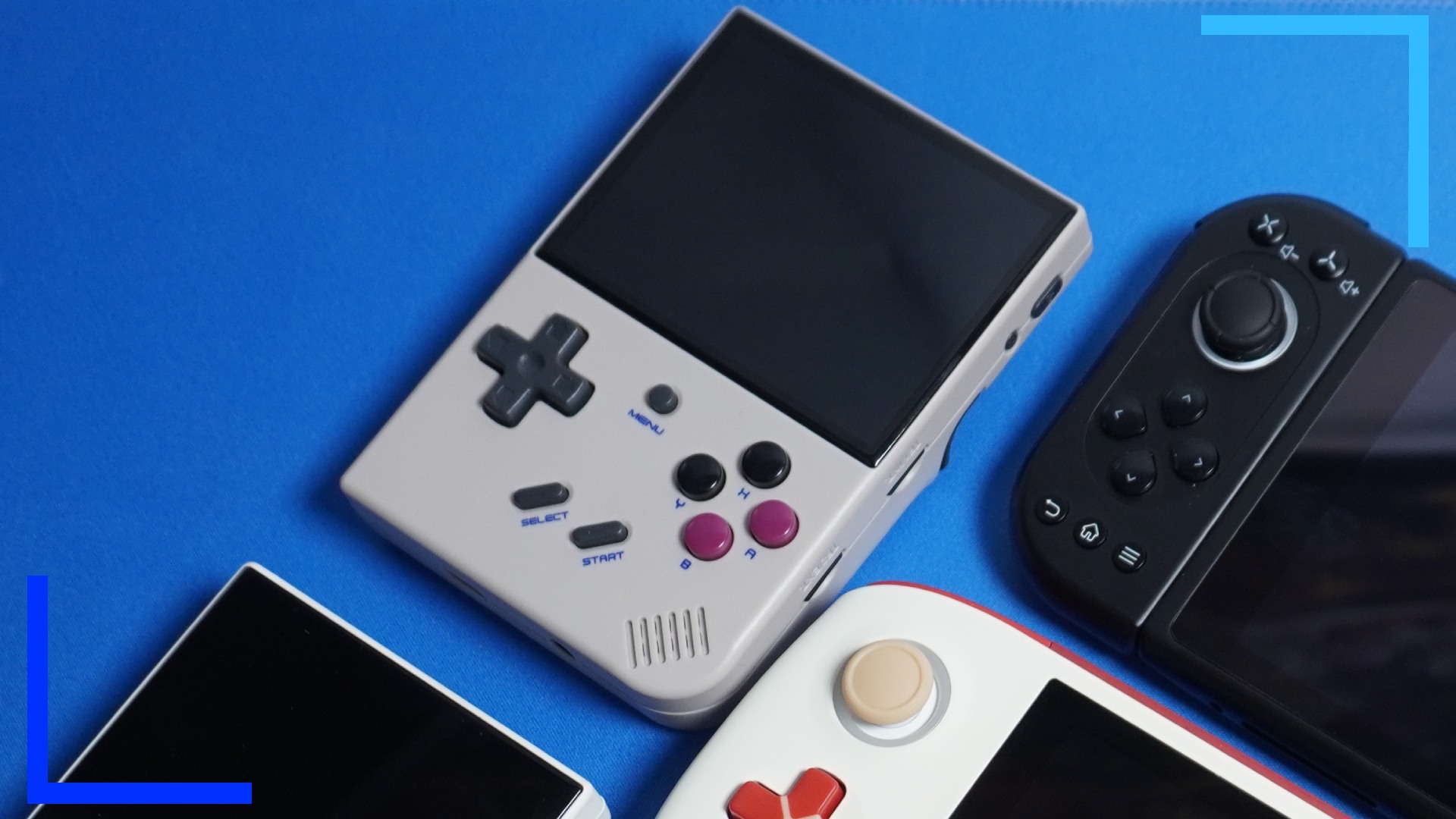
I can summarize the RG3XX Plus really easily: It’s a rip-off of the Miyoo Mini Plus with stronger tech and worse build quality. It’s also the perfect example of how to update a system.
The original RG3XX used the Quad-core ARM Cortex-A9 CPU and it was severely lacking. The move to the H700 quad-core ARM Cortex-A5 in the RG3XX Plus has really changed what this device is capable of.
Both Dreamcast and PSP are much more playable now. I’ve noticed some issues with artifacts on the screen, but these kinds of problems can be patched out with updates. Or, as is the case with most Anbernic devices, chances are there will be a custom operating system available in a few months that makes everything run a lot more smoothly.
On the build quality, I actually prefer the layout and depth of the buttons on the RG3XX Plus to the Miyoo Mini Plus, but the back buttons make a slightly annoying rattling sound. If I could put the tech from the RG3XX Plus inside my Miyoo Mini Plus, I’m pretty sure it’d be the ultimate retro handheld.
5: Super Pocket.
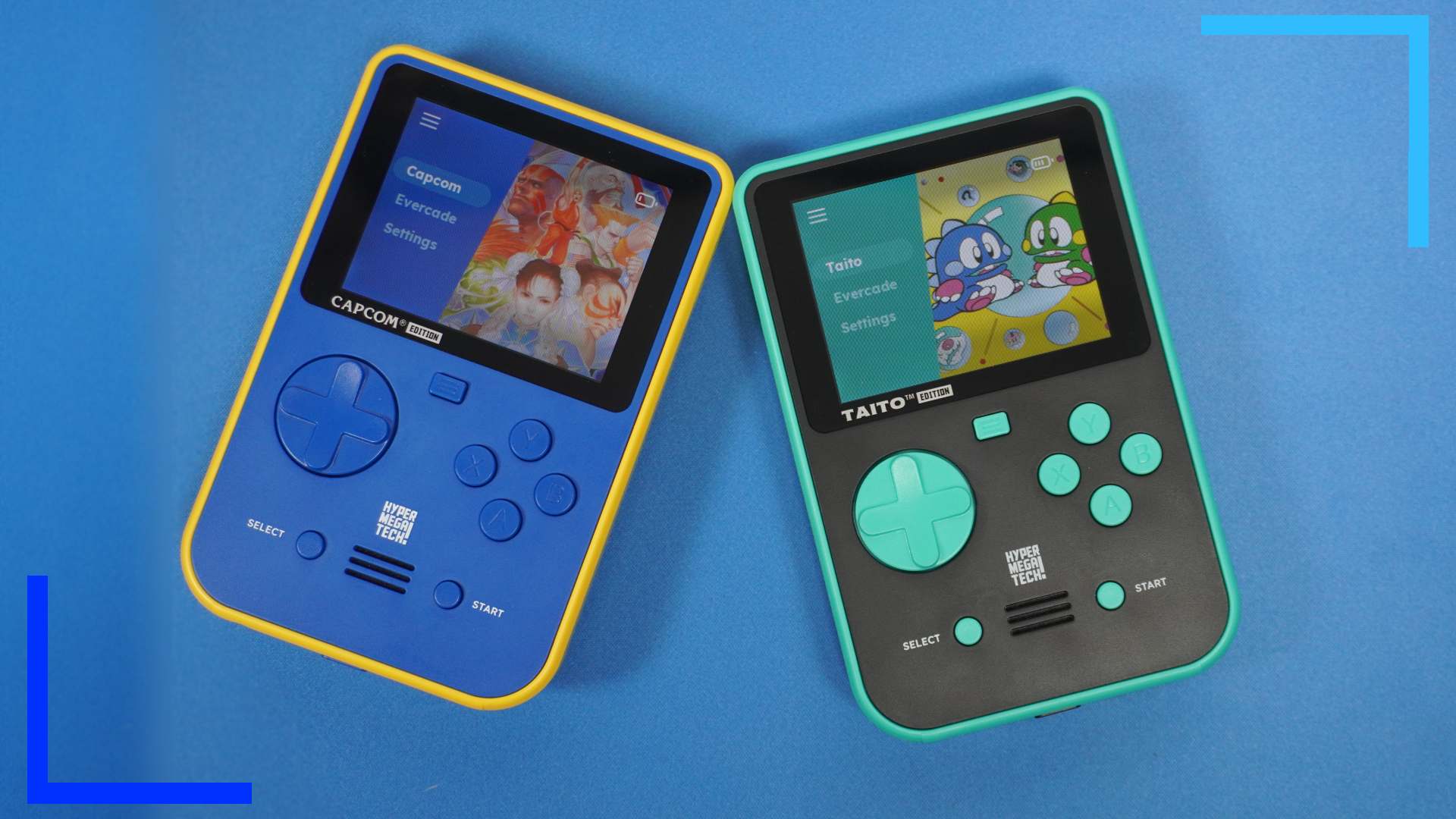
The Super Pocket from HyperMegaTech has been one of this year’s biggest surprises. It’s only $59! That low price makes it simply the best handheld when it comes to value.
You can get cheaper handhelds than this, but in my experience, most of them aren’t very good. The RetroMini is my go-to example of how to waste money on something that seems better than it is. That handheld looked great on paper, but wasn’t able to emulate even simple systems like the SNES without struggling.
What sets the Super Pocket apart from other cheap handhelds is a solid screen quality and it comes with games – the Taito version comes with 18 games, while the Capcom edition features 12. These are legally obtained games as well, not ROMs. Not only that, all your Evercade cartridges work on the Super Pocket as well, so if you’ve already built a library, you’ve got games ready to go.
It’s not perfect by any means. The screen is good but not great, the speakers are average at best, and the back buttons aren’t comfortable – although the latter is a problem most vertical handhelds suffer from.
But what the Super Pocket gets right is what matters. The game choice is excellent, the d-pad is the best sub-$100 one I’ve ever used, and – once again – it’s only $59!
Click here to read the full review.| Click here to watch my review on YouTube.
4: Pimax Portal
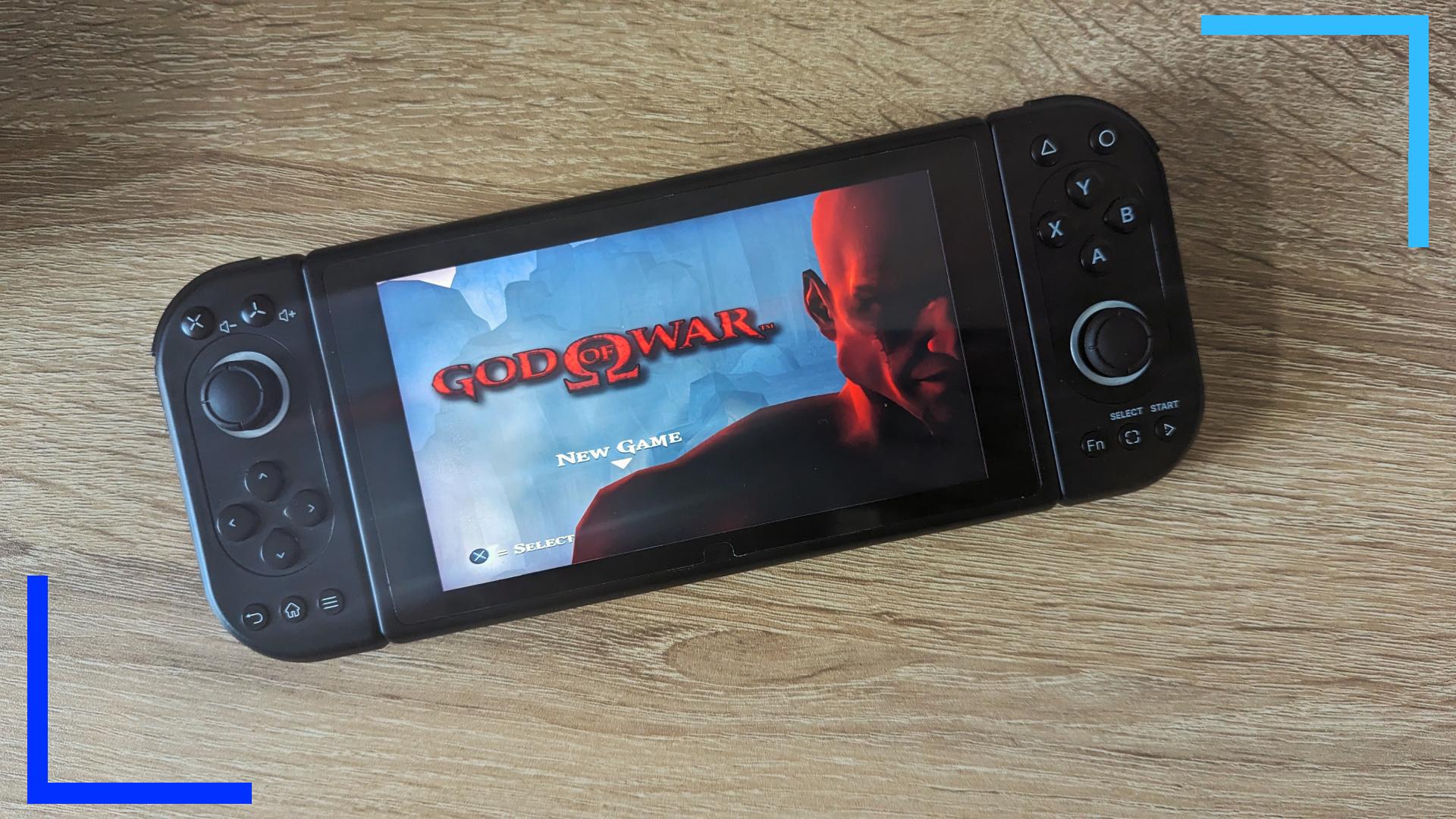
Much like the AYANEO Pocket Air, the Pimax Portal is a high-capable machine that’s able to run PS2 games in glorious 1080p at 60 frames per second.
To say this transforms old games is an understatement. It truly refreshes games that previously lacked any real sense of high-definition, and the result is stunning on the Portal’s 4K screen.
There’s no getting around the fact the Pimax Portal has a Nintendo Switch-style design. But what makes this device so compelling is that it builds upon what Nintendo made and improves the formula. Instead of joy-con rails you slide the controller into, the Portal features magnetic controllers that snap into place. That means the chance of breaking the controller through being a bit too rough or letting your kids play, is much lower. I’m still never going to be a fan of convex thumbsticks, but the overall button placement is solid and feels comfortable to play on.
As for what else you can emulate, there isn’t much difference in terms of power between the Pimax Portal and the AYANEO Pocket Air. Up to Switch, with only lightweight Switch titles being playable, is where this device caps out, and that’s more than fine. We are, after all, limited by the state of the emulators themselves rather than the tech behind the device.
So why is the Pimax Portal behind the AYANEO Pocket Air if they’re similar devices? It all comes down to the operating system. As I say, there really isn’t much in it in terms of power and design, so I need to get really picky. In my experience playing with both systems, I found the AYANEO Pocket Air’s version of Android had fewer problems and app compatibility issues. That’s not to say the Pimax Portal has loads of issues, everything runs great, but the problem count was higher overall by comparison.
Still, the Pimax Portal is an excellent handheld that deserves more eyes on it. If you’re not into the Switch-style layout, the Portal won’t change that. But if you’ve been wanting a Switch 2, the Pimax Portal is the closest thing out there.
Click here to read the full review. | Click here to watch my review on YouTube.
3: Miyoo Mini Plus
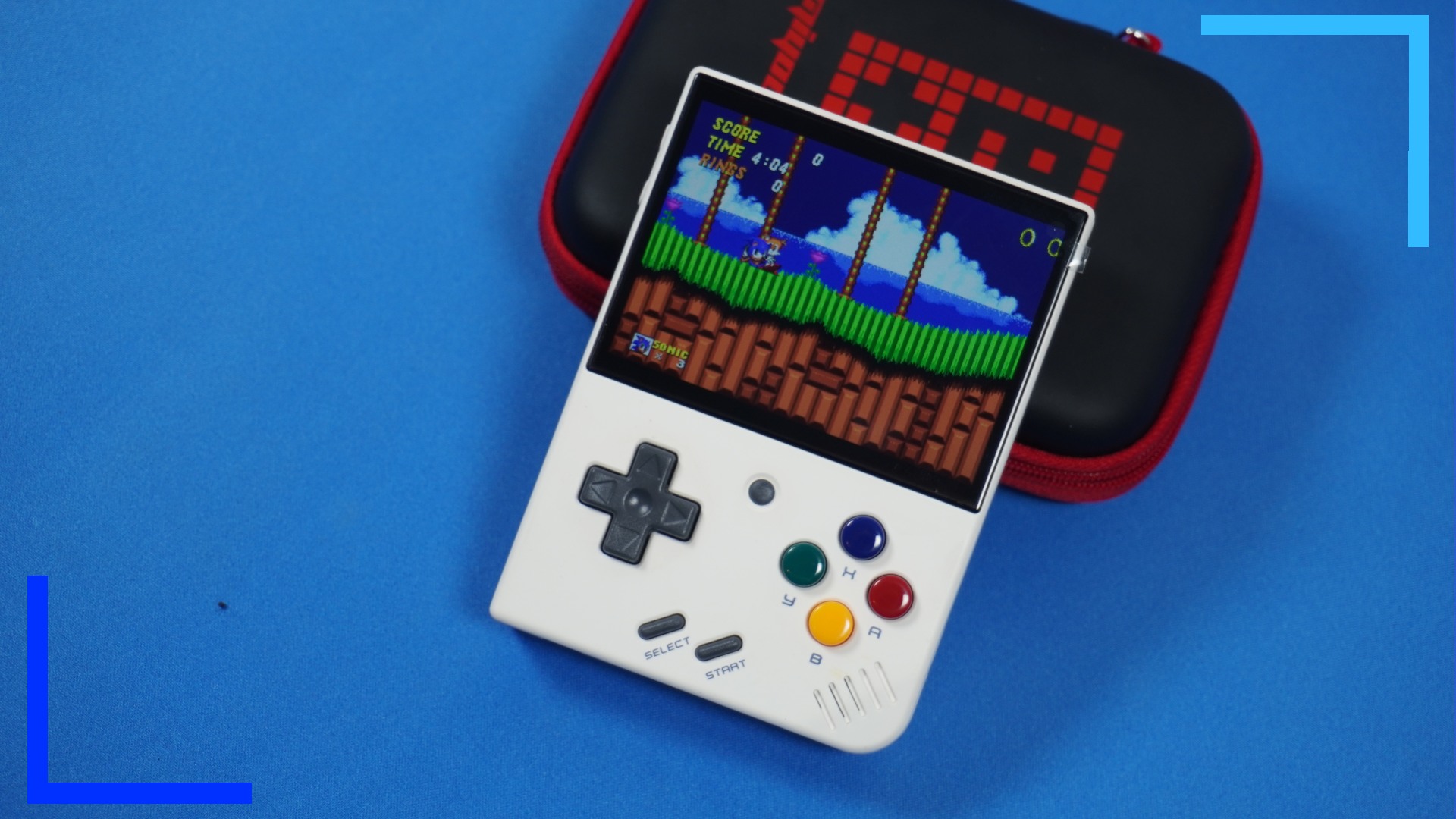
I did not expect to like the Miyoo Mini Plus as much as I did. This purchase was absolutely to see what all the fuss was about.
Can a device that’s just 4.25 inches tall really be as good as people were saying? Kind of. Let me explain.
The small nature of the Mini Plus means it’s one of the few retro handhelds you can physically fit in your pocket. Try doing that with a Steam Deck and chances are you’ll need some new jeans.
As it turns out, the 3.5-inch screen in the Mini is plenty big enough to see what’s happening in-game and react accordingly. Thanks to it being an IPS display as well, I never felt like I was squinting, which is something that happens a lot when you wear glasses.
On the power side of things, the Miyoo Mini Plus is the second weakest device on this list after the Super Pocket. What that means in practice is anything above PS1 isn’t going to be playable on the device, and even then, the Mini Plus doesn’t have any analog sticks, so you couldn’t play them well anyway.
I personally don’t like using the Miyoo Mini Plus for PS1 games either. They work, but there are better options out there. What I see the Mini Plus as is a mini Game Boy-like device designed to play SNES, Master System, and Game Boy Advance games when you’re commuting or want to pass ad breaks in style.
Click here to read the full review. | Click here to watch the review on YouTube.
2: AYANEO Pocket Air
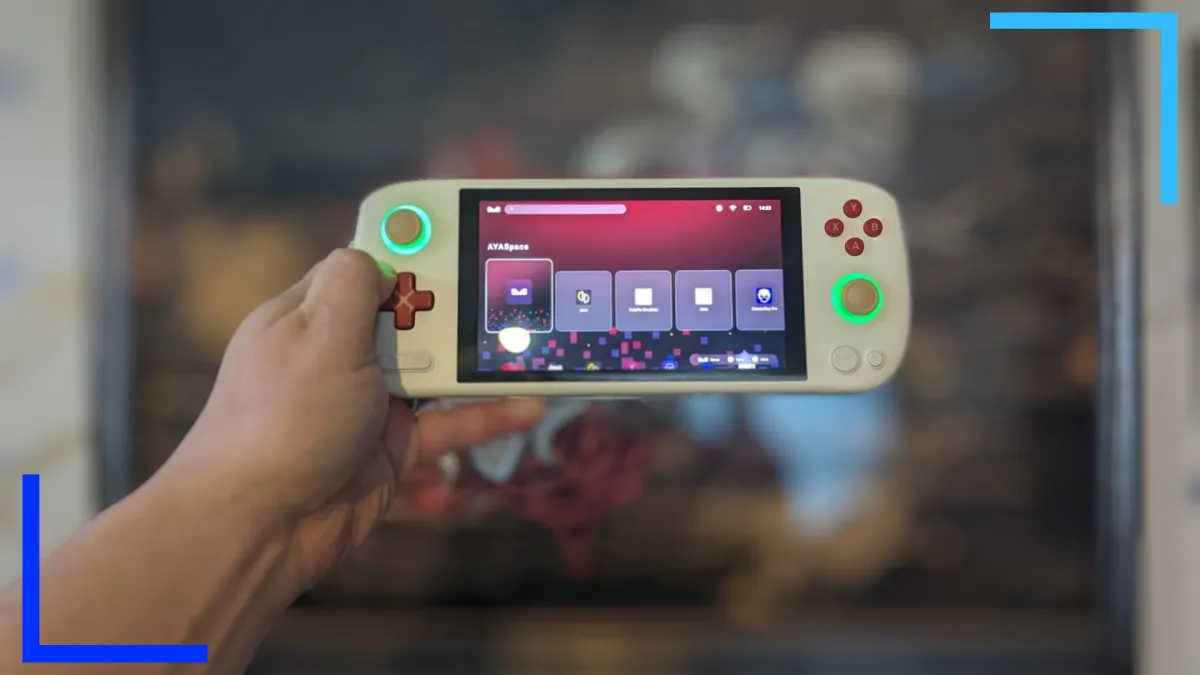
The AYANEO Pocket Air remains the go-to device for emulation on Android. Thanks to the powerful MediaTek Dimensity 1200 chipset, this handheld is only limited by the state of the emulators themselves.
Anything from the 8-bit and 16-bit eras are a breeze on the console, and if you opt for the pricier AMOLED screen, those pixels come out crisp.
What’s so important about the MediaTek Dimensity 1200 processor is that it’s capable of emulating much more powerful systems compared with the likes of the Super Pocket or other cheaper handhelds. How far could I push it? Dreamcast and N64 both worked with minimal slowdown, as did PS2 and GameCube for the most part. I was even able to get lightweight Switch games running in a very playable state. That’s how advanced this chipset is.
There are some minor issues – like how the Pocket Air uses convex thumbsticks instead of concave, and if you don’t like Android, this device isn’t going to change that. The $300 asking price isn’t going to be for everyone either. Especially when the 64GB Steam Deck is just $399 (although that is being fazed out by the more expensive OLED model).
What makes the Pocket Air such a delight is it offers something different. The 5.5-inch screen is roughly the same size as the Switch Lite, which means the device isn’t clunky to hold like the Steam Deck or ROG Ally, and it’s not small like the Miyoo Mini Plus.
In short, it’s the form factor combined with a killer screen and high-powered tech that makes the AYANEO Pocket Air so very easy to recommend.
Click here to read the full review. | Click here to watch my review on YouTube.
1: Anbernic ARC-D
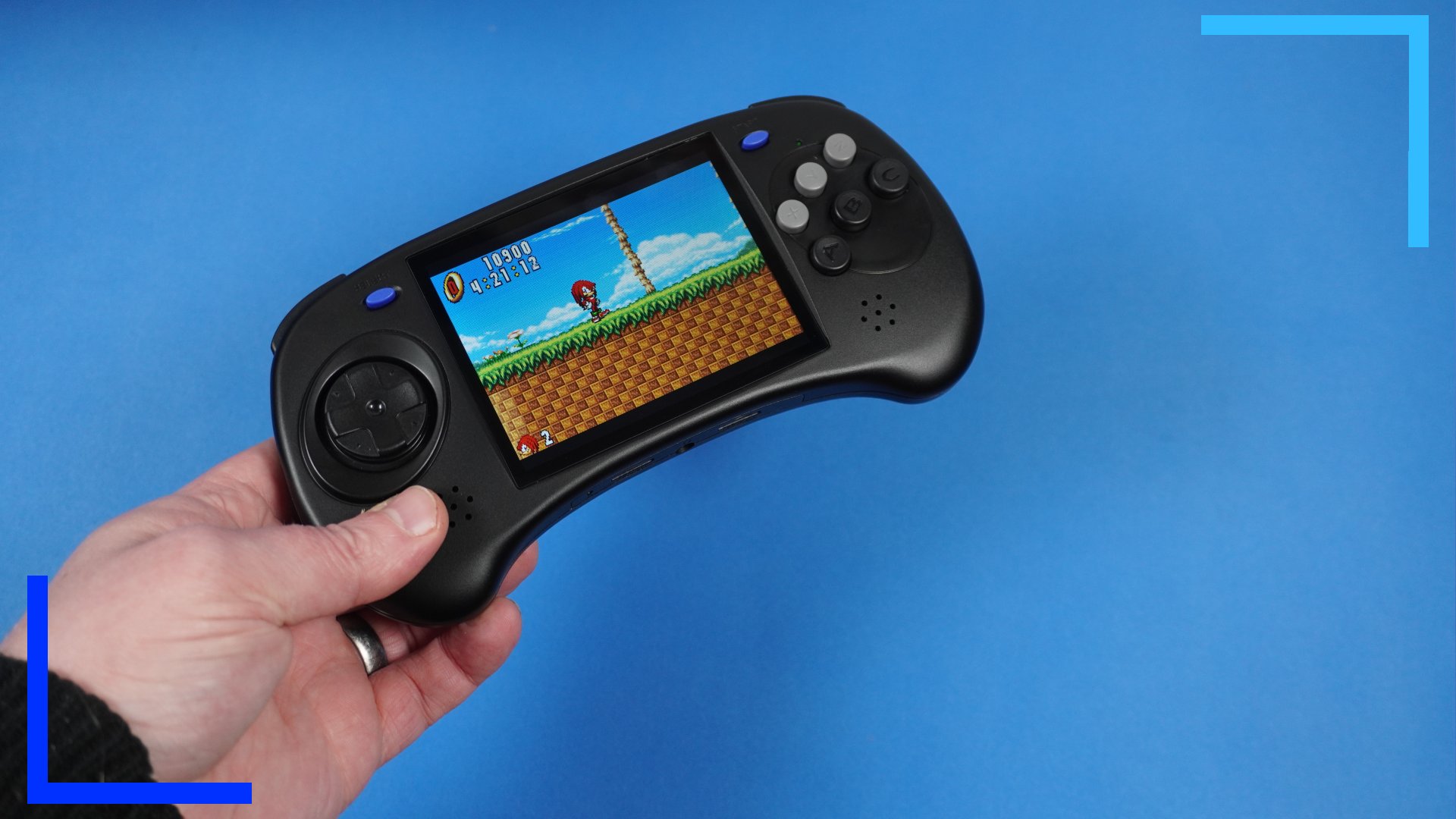
I know people are going to get angry about this, so hear me out. What Anbernic has created in the ARC-D is a near-perfect fighting game handheld. If you play Street Fighter 2, Marvel vs Capcom 2, or the early Tekken games, being able to remap the awkward back buttons onto one of the six face buttons truly changes the game.
You see, back when the Genesis and Sega Saturn came out, fighting game controls were split into low, medium, and high attacks. On an arcade machine – the platform they were primarily designed for – you’d have the six buttons – three for punch, three for kick – on a flat panel. On controllers, the high attacks ended up becoming shoulder buttons.
On the SNES controller, this was less of an issue, but when first-person shooters took over, controllers had to add extra triggers and change the shape of the controller so much that pressing the bumpers became more cumbersome.
Where am I going with this? The ARC-D turns the clock backward. You don’t need to think about triggers because you can map those all-important bumper attacks to the face buttons, and that makes the ARC-D the most comfortable handheld for fighting game fans.
Is it the perfect handheld? No, every handheld has its issues. For the ARC-D, it’s an underbaked Android operating system that’s prone to problems (the Linux side is much better) and despite coming with PSP support, that system simply isn’t playable on the device due to the low-power nature of the handheld. It’s only $89.99 after all, which is cheaper than most of the Retroid offerings and around $200 cheaper than the AYANEO and Pimax offerings. With low pricing, must also come lower compatibility.
But when it comes to SNES, Genesis, Dreamcast, MAME, and some SEGA Saturn, the Linux side of the ARC-D is where things are at their best. If you’re a fan of retro fighting games like I am, the ARC-D is the one ot get. Despite it’s plethora of problems, what it gets right can’t be beat.
Click here to read the full review. | Click here to watch my review on YouTube.
Disclosure: The AYANEO, HyperMegaTech, and Pimax devices were sent by PR. All other handhelds were purchased by me.| All photos captured by Wesley Copeland. To learn more about our review policy click here. | Alternatively, click here to find out why you can trust me.
How We Tested.
Each handheld was used for around 40 hours before the original review was published. This includes leaving the device turned on to test for screen burn, performing several battery depletions and charges, measuring how apps perform, and minor drops to test impact damage.
Since the original review was published, I’ve retested each handheld to make sure no battery issues were detected post-review and to see if any later updates have made the device better or worse.
If you have any questions about this process, feel free to use the contact form to send them over to me.

